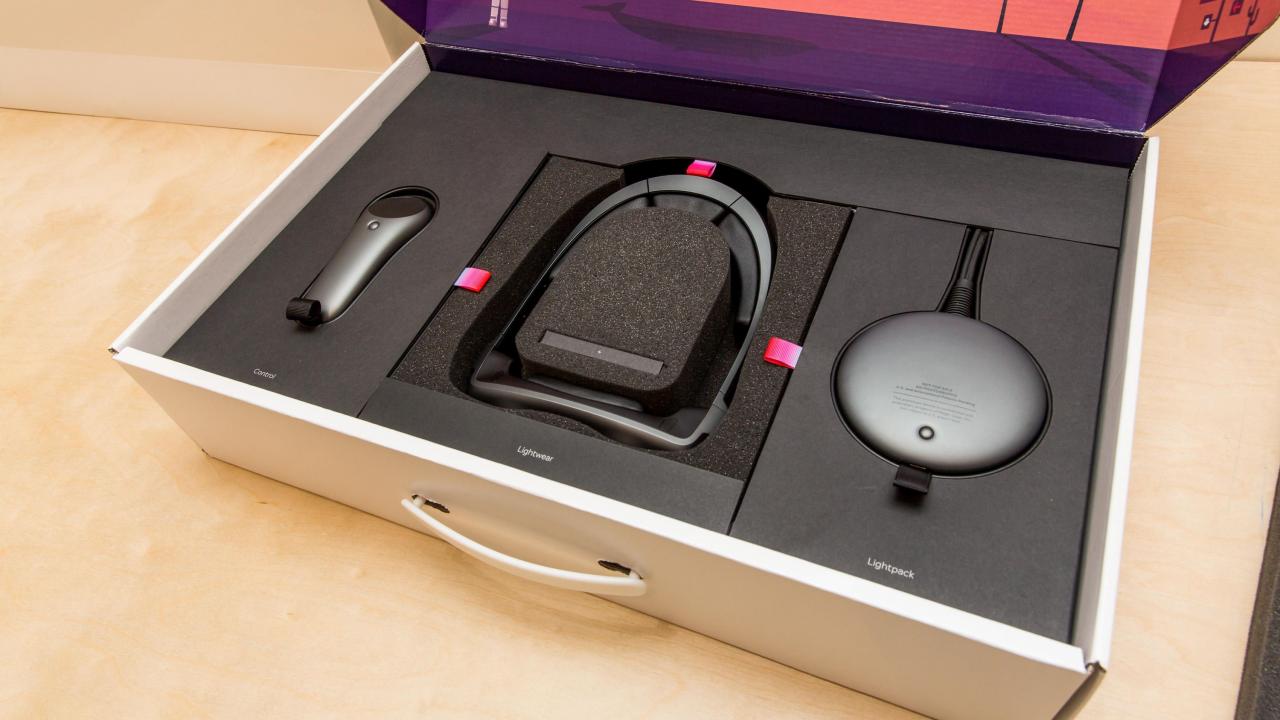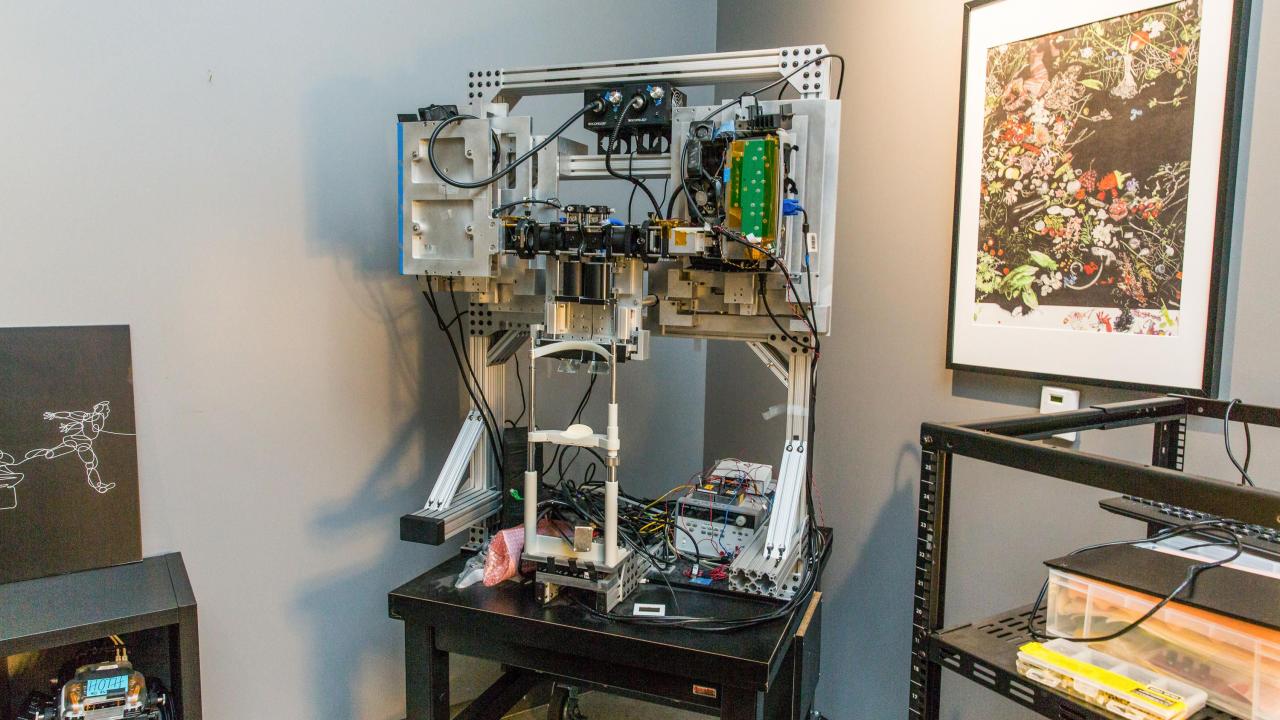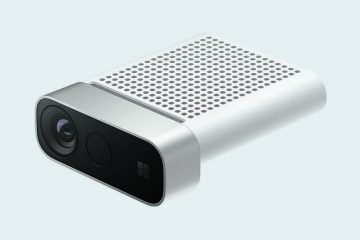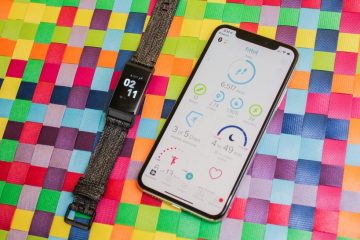Floating holograms. Area-age goggles. The Magic Leap One, the mysterious augmented actuality headset, has been promised for thus a few years, it began to appear as unreal because the worlds it supposedly creates. We’re right here to inform you: Magic Leap is an actual factor. Its debut headset is now in the stores, however at $2,295 with availability in only some cities within the US, it is hardly a mass market product.
However we have lastly tried it for the primary time. And whereas it is a massive step ahead for augmented actuality, it isn’t a leap.
CNET visited Magic Leap’s headquarters in Plantation, Florida, close to Fort Lauderdale. We met CEO Rony Abovitz and a dozen different executives, toured the ability, and noticed the manufacturing facility the place it is manufacturing its distinctive mild field-based lens-displays. And we wore the Magic Leap One, the primary product made by an organization that is had over $2 billion in funding.
In ‘Magic Leap is both good or BS,’ we take a deep dive into how Magic Leap came to be called one of tech’s most secretive startups. And Abovitz explains why job No. 1 for the startup is to ‘show to all people why we now have a purpose for being.’
In ‘I lastly tried Magic Leap and I’ve blended emotions,’ we share impressions from out first hands-on with the Magic Leap One.
The Magic Leap One is a standalone machine with its personal wearable pc and head-mounted show and is chasing the marketplace for AR together with Microsoft, Apple and others. This is what it’s essential to know.
Price: $2,295 (however you might have to pay further)
No, the Magic Leap One Creator Version, the identify of this primary Magic Leap {hardware} system, is not low-cost. The worth of this standalone AR headset is properly above any shopper VR available on the market, together with the HTC Vive Pro. The 2-year-old Microsoft HoloLens prices much more, although, at $3,000.
For an additional $495, there is a ‘Skilled Growth Version’ that features an additional ‘hub cable’ and a service known as RapidReplace, ‘a useful resource designed to supply a alternative machine inside 24 hours.’ It is unclear what which means, nevertheless it seems like a service to supply continuous assist in case of a headset breaking or malfunctioning. We do not have a assessment unit right here at CNET, however we received to have a look at the {hardware} at Magic Leap’s workplaces.
The headset will solely be bought within the US to begin, and solely in sure areas of the US the place Magic Leap can organize complimentary setup and supply.
It is solely obtainable in six cities
The headset will likely be bought on magicleap.com, however you need to be in one among these cities: Chicago, Los Angeles, Miami, New York, San Francisco (Bay Space), and Seattle. Magic Leap says that ‘many extra’ cities will likely be obtainable this fall, however this could point out that the launch for the Magic Leap One is restricted certainly. If you happen to enter your space code on the location and supply is not obtainable, you may apparently be capable to reserve a headset till a time when supply sometime makes it to your metropolis.
White glove service is required for setup
The Magic Leap One Creator Version will solely be bought through a service known as LiftOff, made in partnership with e-commerce startup Enjoy, began by former Apple retail chief Ron Johnson. The service will personally ship and arrange the machine for you in-home, guaranteeing an ideal match. That is one thing we have by no means actually seen earlier than. And sure, this reconfirms that Magic Leap One is not a product for regular, on a regular basis folks but.
You’ll be able to’t use your glasses (prescription lenses bought individually)
If you happen to want glasses, like I do, know that the Magic Leap One will not match over glasses in any respect, whereas most VR headsets and Microsoft HoloLens do. Magic Leap will promote prescription pop-in lenses at a further value. But when your prescription is actually unhealthy, you would possibly simply must get contact lenses as an alternative.

Included: Headset, clip-on PC and controller
The Microsoft HoloLens is all contained in a single visor headset. Magic Leap splits up its elements: a lighter-weight pair of goggles is corded right into a disc-shaped Nvidia-powered micro-PC operating a Tegra X2 processor that clips onto your pants or into an over-the-shoulder strap. A one-handed wi-fi controller, just like these shipped with VR headsets, has a set off button, a shoulder button, a house button and a round touchpad with a hoop of LED lights, and it has haptic vibrating suggestions.
Two sizes, a lot of nostril items
There are completely different suits for Magic Leap, and two sizes for various head sizes and eye distances. The system additionally comes with 5 swappable nostril items and elements to ensure the headset, which weighs in at below 1 pound, suits correctly.

Area of view: Greater than HoloLens, smaller than VR
The Magic Leap One’s efficient viewing space for digital issues feels much more limiting than what you’d get on a daily VR headset, for a number of causes. The official Magic Leap One discipline of view (FOV) has a 4:Three side ratio that is 40 levels horizontal, 30 levels vertical and 50 levels diagonal. It is like dangling a small glass rectangle in entrance of your face to see AR via. Microsoft HoloLens suffers related restricted discipline of view. Magic Leap’s viewing space is a bit bigger, however smaller than what present VR headsets provide.
The opposite purpose AR naturally feels limiting is which you could see every thing else round you, with unobstructed peripheral imaginative and prescient. VR headsets blind issues off like a windowless scuba masks. That was the HoloLens downside, and it is the Magic Leap One’s downside, too.
Magic Leap is attempting to offset that limitation by emphasizing how objects seen within the headset can appear bigger because the efficient cone/pyramid of view extends farther again. The official time period, viewing frustum, implies that further-back objects might look greatest. Magic Leap says the 3D results can begin at about 14 inches away, and prolong infinitely.
Specs: Nvidia Tegra X2 processor and extra
The clip-on Lightpack PC has specs larger than a cellphone or the Nintendo Change, and extra on the order of a PC. It is like a variant of the NUC transportable computer systems Intel has made — however with an Nvidia Tegra X2 system-on-chip. There’s 128GB of storage, however solely 95GB will likely be free to retailer downloads.
- CPU/GPU: Nvidia Parker SOC
- CPU: 2x Denver 2.0 64-bit cores, 4x ARM Cortex A57 64-bit cores (2x A57s and 1x Denver accessible to functions)
- GPU: Nvidia Pascal with 256 CUDA cores. Graphics APIs, per Magic Leap: OpenGL 4.5, Vulkan, OpenGL ES 3.1+AEP
- RAM: 8GM (4GB obtainable to apps)
- Storage: 128GB (95GB obtainable for apps)
- Audio enter: voice (speech-to-text) and actual world ambient audio
- Audio output: audio system in headband, and three.5mm headphone jack (spatial 3D audio)
- Connectivity: Bluetooth 4.2, Wi-Fi 802.11ac/b/g/n, USB-C
- Weight: Lightpack (415 grams/14.63 ounces), Lightwear (325 grams/11.46 ounces)
Controller: Vibrating haptics, USB-C recharging
The included controller is supposed to be held in a single hand, very similar to the Oculus Go controller or Samsung Gear VR. It has a rear set off and an above-the-trigger shoulder button on the entrance. There’s additionally a round trackpad with a hoop of 12 multicolor LED lights that may activate to point the place to press in apps, and a house button beneath that. The controller has six-degree-of-freedom (6DOF) monitoring like desktop VR controllers, a step up from the extra restricted controls on cellular VR headsets like Oculus Go and Google Daydream, which implies it will possibly transfer round and work with 3D AR seamlessly. (we had ours flip right into a blaster gun in a single recreation). The controller lasts for 7.5 hours on a cost and recharges with a 15-watt USB-C charger.
Battery life? About Three hours
The Oculus Go standalone VR headset lasts about 2 hours on a cost. Identical for Google’s self-contained VR headset, the Lenovo Mirage Solo. The Magic Leap One guarantees just a little higher, at as much as Three hours. That is within the vary of the Nintendo Change.
The clip-on Lightpack has the lithium-ion battery inside, which recharges through a 45-watt USB-C charger. Magic Leap says, nonetheless, ‘Battery life can fluctuate primarily based on use instances.’ Plugging the system in ought to hold the system always operating: ‘energy stage will likely be sustained when linked to an AC outlet,’ Magic Leap’s specs say.

Launch apps: What you are able to do
We solely received to attempt some demos with the Magic Leap One, and have not but unboxed a shipped model. However Magic Leap’s together with some software program in-box. It is not a lot, however this is what ought to be on board, in accordance with Magic Leap.
- Magic Leap World (an app for Magic Leap’s app retailer.)
- Dr. Grordbort’s Invaders Preview (an icon indicating that the robot-shooting recreation from Weta Workshop is coming quickly.)
- Helio (Magic Leap One’s net browser, which helps 3D content material. CNET briefly demoed Wayfair and the NY Occasions AR browser experiences.)
- Social Suite (a toolkit for making avatars and supporting shared areas. CNET tried a two-person avatar chat.)
- Screens (a device for popping a number of shows directly in a room and viewing media on screens.)
- Create (Magic Leap Studio’s portray/artwork device, which CNET tried a demo of.)
- Tonandi (Sigur Ros’ music AR app, which CNET additionally received to attempt.)
Magic Leap’s different apps in Magic Leap World:
- Abductor (a creator device for serving to scan or ‘mesh’ a room and discover developer concepts for spatial computing, per Magic Leap.)
- NBA Preview App (which CNET received to attempt a preview of; it is a prototype of what the NBA will goal to discover in additional methods down the highway in AR.)
Magic Leap will even have a Creator Portal, a developer hub the place a couple of further instruments will likely be obtainable, together with inventive software program known as Magic Equipment.
You’ll be able to give attention to objects at completely different depths, one thing VR cannot do
Mild discipline shows can work with variable focus, one thing I did not see emphasised in my demos. However Magic Leap responded that ‘your eyes can give attention to digital objects in the identical vogue as they might give attention to bodily objects — each close to and much.’ It is like how our eyes already work. VR would not really do that; present VR worlds are fixed-focus.
Magic Leap can observe your eyes, however would not at all times use it
Eye gaze monitoring is ‘not at all times used,’ in accordance with Magic Leap. ‘Nonetheless, particular person functions can select to make use of the attention gaze as a robust enter technique.’ Eye monitoring is beginning for use within the subsequent wave of VR {hardware}, and eye monitoring could possibly be used to make eye contact or work together with objects with out utilizing your arms.
The headset depth sensor works from ‘arm’s size’ to from Three to five meters
The Magic Leap One’s room-scanning and meshing know-how begins at round 14 inches away, and extends roughly 9.eight ft to 16.Four ft away. Scanning an entire room means shifting shut sufficient for the depth sensors to register the partitions, ground and furnishings. Apps might both hold remeshing (scanning) the room, or use a single room-mesh.

Approach again, there was a Magic Leap comedian guide (!)
Magic Leap’s founder and CEO, Rony Abovitz, created a comic book again in 2012 with comedian author (and Guardians of the Galaxy 2008 comedian co-creator) Andy Lanning, after the corporate was based in 2010. The comedian, ‘Magic Leapers: Welcome To The Expertise,’ imagined youngsters discovering a Wonka-like manufacturing facility the place little bug-eyed flying creatures might prolong their snouts and present doorways to magical worlds. This was approach earlier than Magic Leap even had a working headset. These creatures, the Leapers, are what partially impressed the headset’s bug-eyed lens design.

And earlier than it was a headset, it was an enormous set of prototypes
The primary Magic Leap demo {hardware}, known as ‘The Beast,’ is on show in Magic Leap’s headquarters. It appears to be like like a nightmare model of eye-exam gear. Its prism lenses solely confirmed primary pixels at first. For extra, watch our transient historical past lesson on Magic Leap’s AR desires.



0 Comments